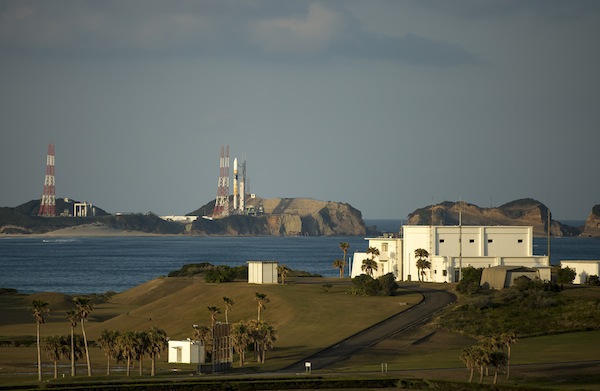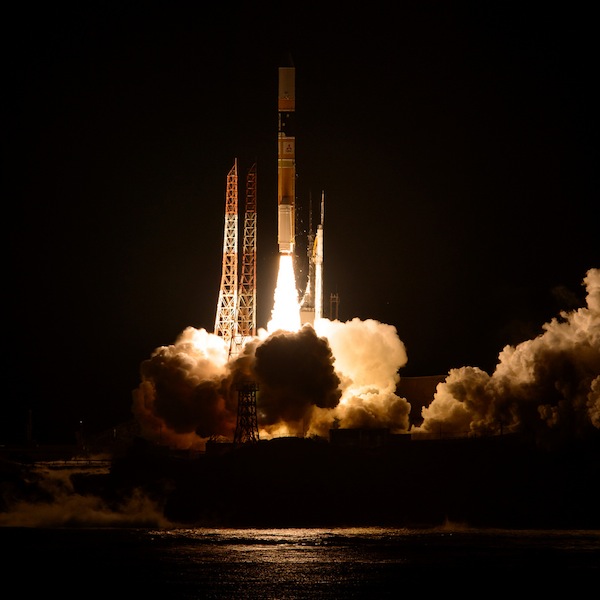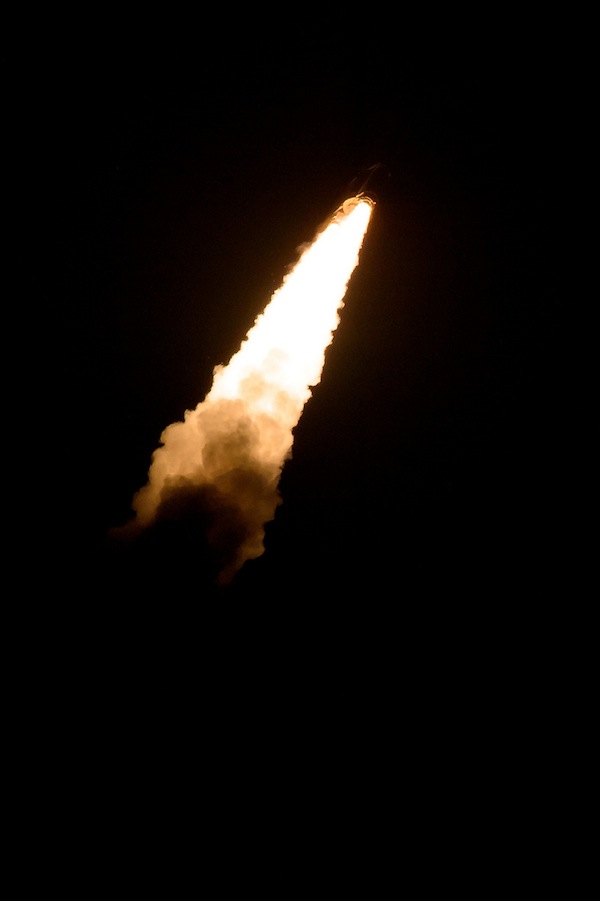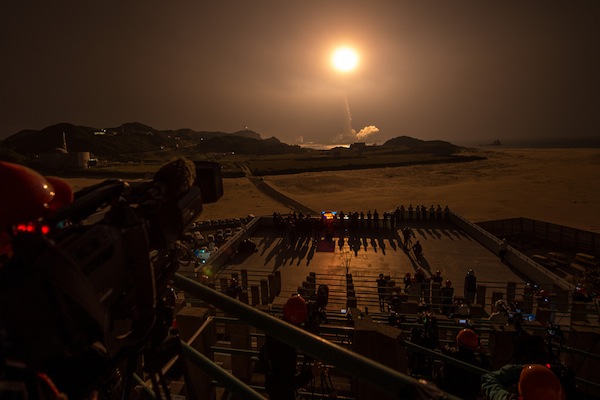H-2A rocket blasts off with GPM Core Observatory
BY STEPHEN CLARK
SPACEFLIGHT NOW
Posted: March 1, 2014

Japan launched a $1.2 billion joint satellite mission with NASA on Thursday to measure global rain and snowfall, filling coverage gaps and anchoring an international orbital network to supply scientists and forecasters a radar-like snapshot of global precipitation every three hours.
The GPM Core Observatory lifted off atop a Japanese H-2A rocket Thursday at 1837 GMT (1:37 p.m. EST) from Tanegashima Space Center, an idyllic island launch base off the southern shore of Japan's main islands at the intersection of the Pacific Ocean and the East China Sea.
Coated in orange insulating foam to preserve reservoirs of super-cold liquid oxygen and liquid hydrogen propellants, the 174-foot-tall launcher lit its core main engine and two strap-on solid rocket boosters to race away from the Tanegashima spaceport, where it was 3:37 a.m. local time Friday.
See our Mission Status Center for live coverage of the launch.

Credit: NASA/Bill Ingalls

Credit: NASA/Bill Ingalls

Credit: NASA/Bill Ingalls

Credit: NASA/Bill Ingalls

Credit: NASA/Bill Ingalls

Credit: NASA/Bill Ingalls

Credit: NASA/Bill Ingalls

Credit: NASA/Bill Ingalls

Credit: NASA/Bill Ingalls
|












